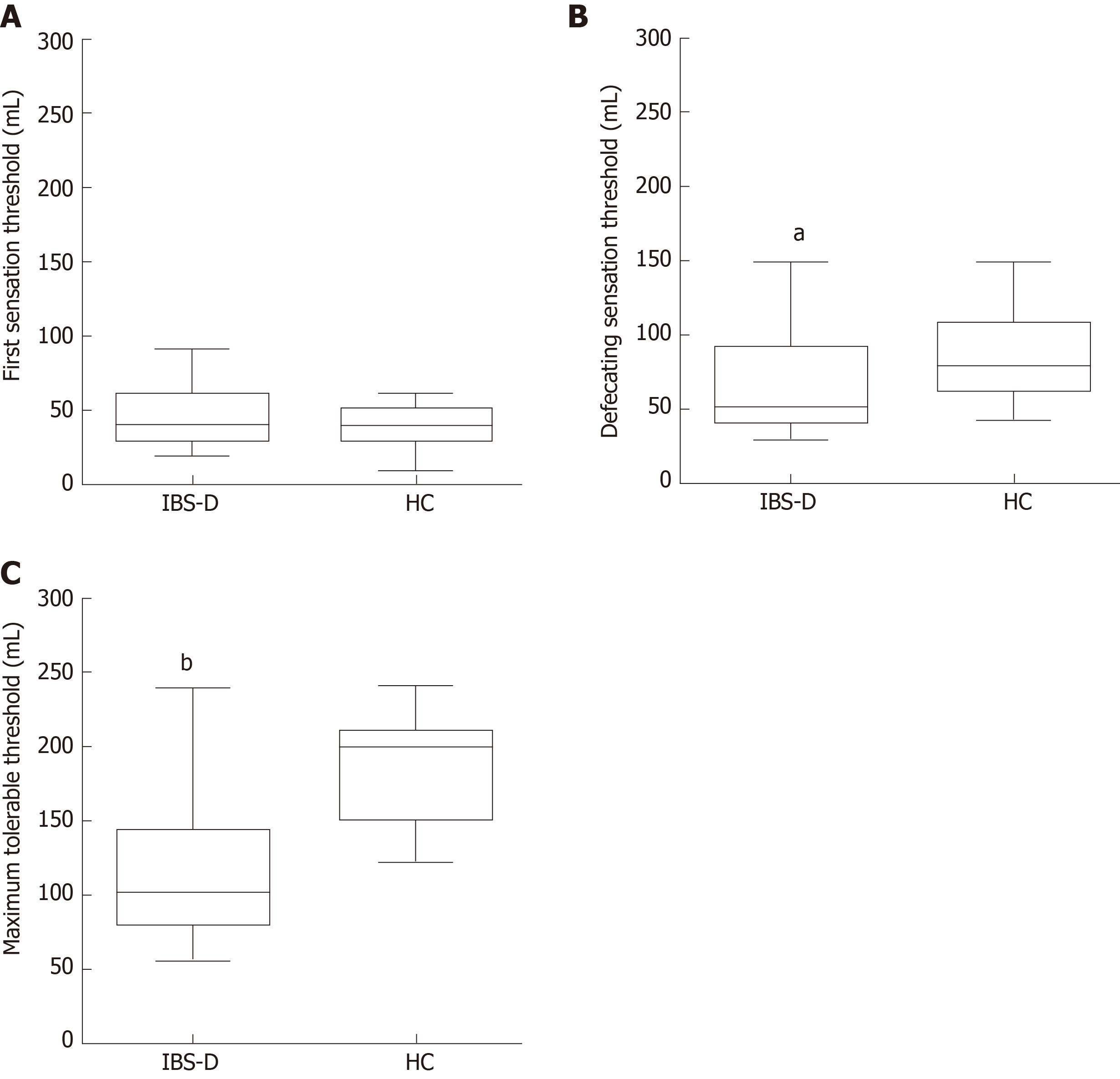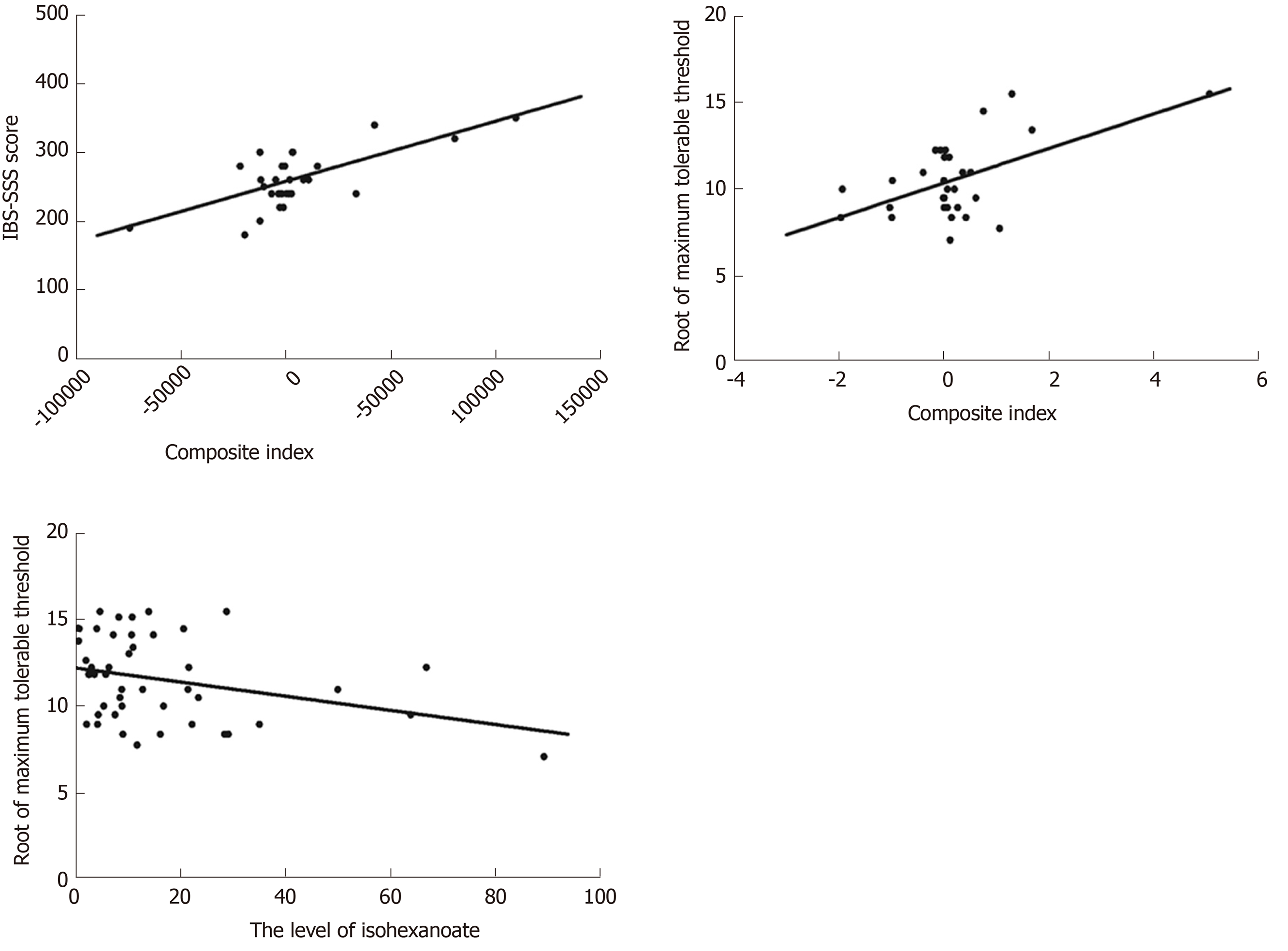Copyright
©The Author(s) 2019.
World J Gastroenterol. Nov 21, 2019; 25(43): 6416-6429
Published online Nov 21, 2019. doi: 10.3748/wjg.v25.i43.6416
Published online Nov 21, 2019. doi: 10.3748/wjg.v25.i43.6416
Figure 1 Visceral sensation thresholds to rectal distension stimulation.
A: The first sensation threshold showed no significant difference between the two groups (P = 0.315). B: The score of the defecating sensation threshold was significantly decreased in the patients (P = 0.032). C: The maximum tolerable threshold was also lower in patients with irritable bowel syndrome with predominant diarrhea than in controls (P < 0.001). Box means the interquartile range; line inside the boxes indicates the median; the two whiskers indicate the 5th percentile and 95th percentile of the data. aP < 0.05 vs healthy control (HC); bP < 0.01 vs HC. IBS-D: Irritable bowel syndrome with predominant diarrhea; HC: Healthy control.
Figure 2 Correlation of fecal microbial metabolites with irritable bowel syndrome symptom severity scale score or maximum tolerable threshold.
A: Correlation of fecal microbial metabolites with irritable bowel syndrome symptom severity scale score in irritable bowel syndrome with predominant diarrhea (IBS-D) patients (R2Adjusted = 0.693, P < 0.001). The composite index was the sum of score based on linear combination of metabolites using the coefficients listed in Table 4. B: Correlation of metabolites with maximum tolerable threshold in IBS-D patients (R2Adjusted = 0.255, P = 0.007); The composite index was the sum of scores based on linear combination of isovalerate and valerate using the coefficients listed in Table 6. C: Correlation of metabolites with maximum tolerable threshold in all subjects (R2Adjusted = 0.079, P = 0.034).
- Citation: Zhang WX, Zhang Y, Qin G, Li KM, Wei W, Li SY, Yao SK. Altered profiles of fecal metabolites correlate with visceral hypersensitivity and may contribute to symptom severity of diarrhea-predominant irritable bowel syndrome. World J Gastroenterol 2019; 25(43): 6416-6429
- URL: https://www.wjgnet.com/1007-9327/full/v25/i43/6416.htm
- DOI: https://dx.doi.org/10.3748/wjg.v25.i43.6416










